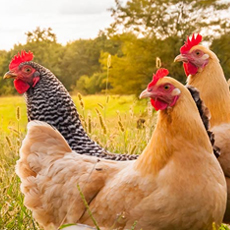- Afrikaans
- Albanian
- Amharic
- Arabic
- Armenian
- Azerbaijani
- Basque
- Belarusian
- Bengali
- Bosnian
- Bulgarian
- Catalan
- Cebuano
- Corsican
- Croatian
- Czech
- Danish
- Dutch
- English
- Esperanto
- Estonian
- Finnish
- French
- Frisian
- Galician
- Georgian
- German
- Greek
- Gujarati
- Haitian Creole
- hausa
- hawaiian
- Hebrew
- Hindi
- Miao
- Hungarian
- Icelandic
- igbo
- Indonesian
- irish
- Italian
- Japanese
- Javanese
- Kannada
- kazakh
- Khmer
- Rwandese
- Korean
- Kurdish
- Kyrgyz
- Lao
- Latin
- Latvian
- Lithuanian
- Luxembourgish
- Macedonian
- Malgashi
- Malay
- Malayalam
- Maltese
- Maori
- Marathi
- Mongolian
- Myanmar
- Nepali
- Norwegian
- Norwegian
- Occitan
- Pashto
- Persian
- Polish
- Portuguese
- Punjabi
- Romanian
- Russian
- Samoan
- Scottish Gaelic
- Serbian
- Sesotho
- Shona
- Sindhi
- Sinhala
- Slovak
- Slovenian
- Somali
- Spanish
- Sundanese
- Swahili
- Swedish
- Tagalog
- Tajik
- Tamil
- Tatar
- Telugu
- Thai
- Turkish
- Turkmen
- Ukrainian
- Urdu
- Uighur
- Uzbek
- Vietnamese
- Welsh
- Bantu
- Yiddish
- Yoruba
- Zulu
Dec . 25, 2024 14:10 Back to list
Amoxicillin Dosage Guidelines for Cattle Treatment and Management Practices
Amoxicillin Dosage in Cattle An Essential Guide for Veterinary Care
Amoxicillin is a broad-spectrum antibiotic that falls under the category of penicillins. It is widely used in veterinary medicine, particularly in cattle, for the treatment of various bacterial infections. The effectiveness of amoxicillin in treating infections largely depends on the appropriate dosage, which can vary based on the specific condition being treated as well as the weight and health status of the animal. In this article, we will explore the dosages, administration methods, and important considerations for using amoxicillin in cattle.
Understanding Amoxicillin
Amoxicillin works by inhibiting the synthesis of bacterial cell walls, ultimately leading to the death of susceptible microorganisms. It is effective against a variety of gram-positive and some gram-negative bacteria, making it a versatile choice for treating conditions such as respiratory infections, mastitis, and skin infections in cattle. When used correctly, amoxicillin can significantly reduce mortality rates and improve overall health in herds.
Dosage Guidelines
The dosage of amoxicillin in cattle typically depends on the specific condition being treated and the animal's body weight. Generally, the recommended dosage ranges from 5 to 10 mg per kg of body weight, administered every 12 to 24 hours. For example, a 500 kg cow may require a total of 2,500 to 5,000 mg of amoxicillin daily, divided into two or three doses. It is crucial to follow veterinary guidance to determine the appropriate dose and frequency, as overuse can lead to resistance and underdosing may not effectively treat the infection.
Administration Methods
amoxicillin dose in cattle

Amoxicillin can be administered to cattle in several forms, including oral suspensions, injectable solutions, and in some cases, as part of medicated feed. Oral administration is often preferred for ease of use and comfort for the animal, though injectable forms may be necessary for more severe infections or when rapid action is required. Proper techniques for administering medications, such as ensuring the dosage is accurate and observing for any signs of adverse reactions, are essential components of effective veterinary care.
Considerations and Precautions
When administering amoxicillin, it is important to consider any possible contraindications or interactions with other medications. It should not be used in animals with a known allergy to penicillin antibiotics. Additionally, veterinarians should assess liver and kidney function before treatment, as impaired organ function can affect drug metabolism and excretion.
Another critical factor is the withdrawal time, which is the period required after treatment before the animal can be slaughtered for meat or before producing milk for human consumption. The withdrawal period for amoxicillin typically ranges from 4 to 10 days, depending on the formulation used. Adhering to these guidelines ensures food safety and consumer health.
Conclusion
Amoxicillin plays a vital role in the treatment of bacterial infections in cattle. Administering the correct dosage and following veterinary recommendations can optimize treatment outcomes while minimizing risks. As with any antibiotic treatment, responsible use is key to preserving the efficacy of amoxicillin and ensuring the health of cattle herds. Always consult a qualified veterinarian for the most accurate diagnosis and appropriate treatment plan tailored to the needs of your livestock. By understanding the pharmacology and protocols associated with amoxicillin, farmers can enhance the wellbeing of their cattle and contribute to sustainable farming practices.
-
Guide to Oxytetracycline Injection
NewsMar.27,2025
-
Guide to Colistin Sulphate
NewsMar.27,2025
-
Gentamicin Sulfate: Uses, Price, And Key Information
NewsMar.27,2025
-
Enrofloxacin Injection: Uses, Price, And Supplier Information
NewsMar.27,2025
-
Dexamethasone Sodium Phosphate Injection: Uses, Price, And Key Information
NewsMar.27,2025
-
Albendazole Tablet: Uses, Dosage, Cost, And Key Information
NewsMar.27,2025













